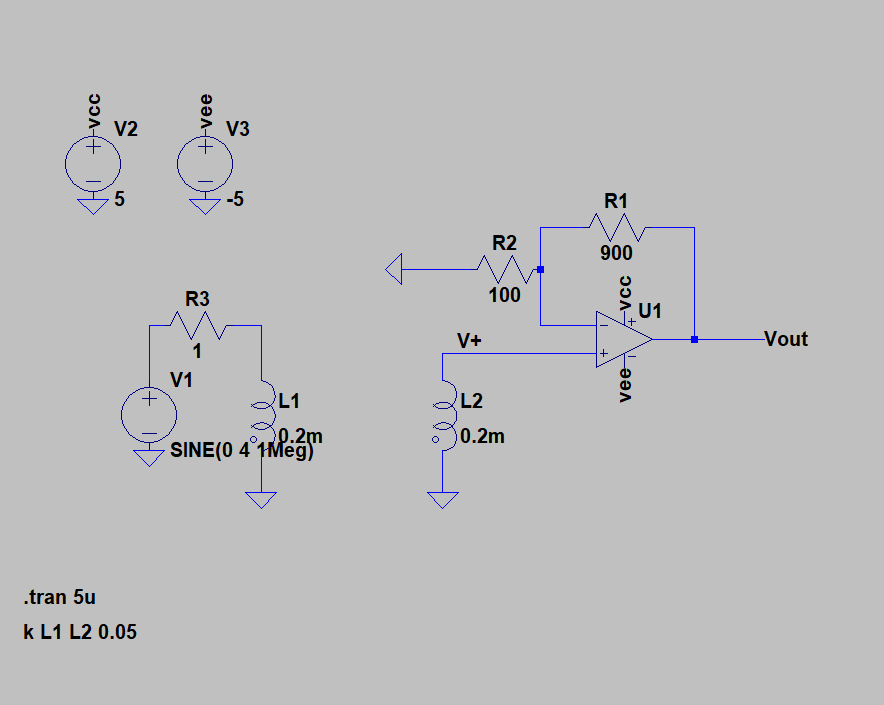I have a primary inductor connected to a voltage source with frequencies varying from 100kHz to 15MHz. This primary inductor induces a voltage across a secondary inductor via coupling and I want to amplify that induced voltage and put it through an ADC.
I can do this voltage amplification easily enough with an ideal op amp in non-inverting configuration simulated in LTspice. The two figures below are the schematic and simulation results for the ideal op amp.
However as soon as I simulate it with a real world model op amp like the LT1818 I get some nasty oscillations on the input node of the op amp which also results in oscillations of the output node. These oscillations always appear even when I vary the frequency in the primary voltage source. I understand that it's probably related to the phase margin of the op amp and the inductive input, but I don't know how to fix it. The two figures below are the schematic and simulation results for LT1818.
How do I get rid of these oscillations? I have tried another op amp like the LM6172 and I also get similar results. I was also wondering if there is a better way to read the voltage out of a coupled inductor?
Thanks!




